Meet the taxidermist in Singapore who finds beauty and meaning in dead animals
Advertisement
Living
Meet the taxidermist in Singapore who finds beauty and meaning in expressionless animals
CNA Lifestyle met up with Black Crow Taxidermy & Fine art's Vivian Tham, who turned an early fascination with insects into a new passion preserving everything from beetles to even a equus caballus.
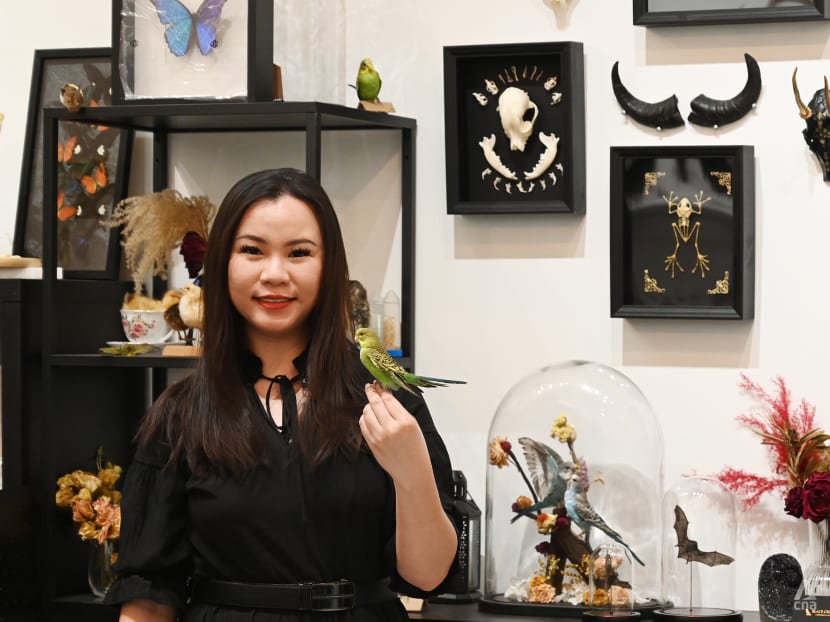
Vivian Tham, 28, is a professional taxidermist who founded Singapore's offset and merely commercial taxidermy studio. (Photo: Marcus Mark Ramos/CNA)
05 Feb 2022 07:15AM (Updated: 05 Feb 2022 07:15AM)
Somewhere in the lively hustle and hurry of Chinatown, in i of Singapore's last few remaining pre-World War II buildings, is a room total of dead animals.
Walk along Pearl'due south Hill Terrace'due south seemingly never-ending corridors and you'll come across various creative spaces and start-ups – including a quirky studio with a snake skeleton and a caprine animal's skull on display through the drinking glass door.
Step inside and you'll see many colourful collywobbles and beetles all framed up and hanging on the walls. Somewhere, there was also a expressionless chick sitting in a cup.
"Everything yous encounter here used to be live," explained the lady who had ushered me into the most unusual shop I've always been in – a taxidermy studio.
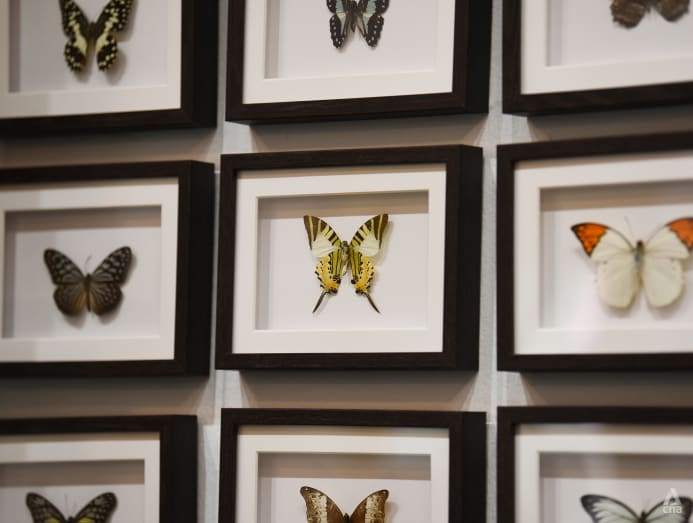
WHAT IS Blackness CROW AND WHO IS Behind IT
Vivian Tham runs Blackness Crow Taxidermy & Art, which may be Singapore's starting time and only commercial taxidermy studio.
Information technology was founded in September last yr by the 28-year-old zoologist, who had turned her fascination with dead animals into an unusual business every bit a professional taxidermist.
It was a fascination that started at a young age back in Ipoh, Malaysia. Tham recalled how her older brother used to visit a woods near their habitation to collect expressionless insects, and he would promptly share his discoveries with her.
The patterns and colouration constitute on the insects intrigued her and so much she eventually decided to take up zoology, where she took information technology to the next level.
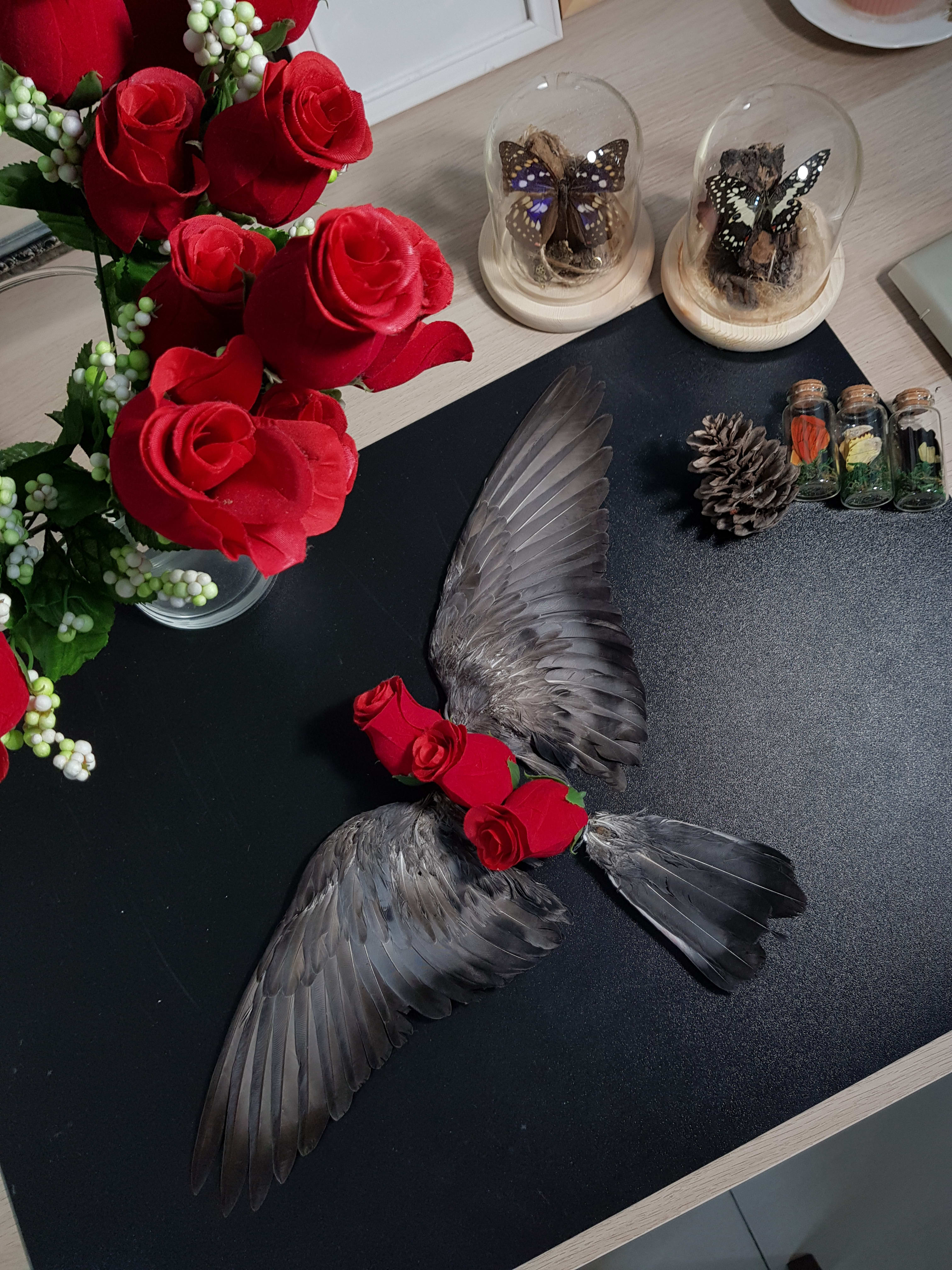
During her time as a zoologist in Sarawak from 2022 to 2019, she worked with many dead animals for biodiversity research. And instead of disposing of the cadavers after her research, Tham decided to make clean and prettify these to show the public how cute the animals used to exist.
Then she decided to pursue taxidermy – the practise of preserving dead wild animals – total-fourth dimension.
Her beginning official clients were friends who entrusted their dear deceased pets to her – and later persuaded her to show off her work on social media.
THE MOVE FROM A Dwelling house-BASED Concern TO A STUDIO
What began as a small dwelling-based business concern at her HDB flat slowly grew – and with the pandemic in full-swing, she had to make a decision.
"I wasn't too comfortable having people over at my house everyday especially with COVID-19," she said, which was why she decided to set up Black Crow Taxidermy & Art in Chinatown.
Tham explained she practices five types of preservation at her studio: Dry preservation, chemical preservation, mummification, skeletal articulation, and stuffing.
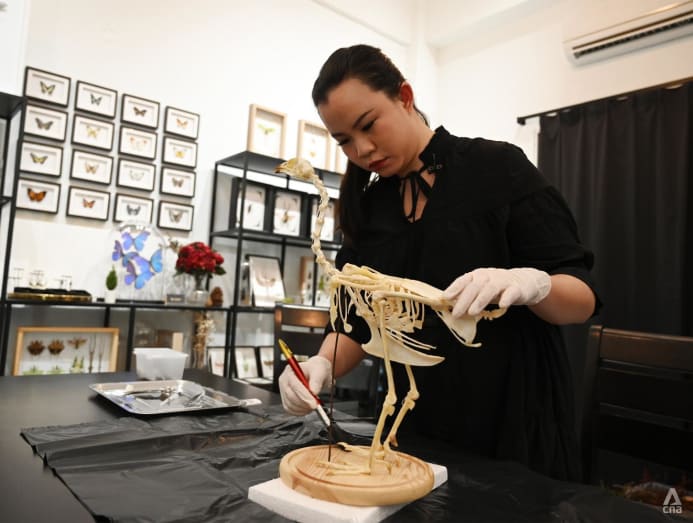
All the animals she works on are ethically sourced. Besides roadkill, she receives animals from entomologists (those who study insects) and pet owners who want their deceased pets to be taxidermised. Tham fifty-fifty had a client who preserved their dead pet in a freezer for years while seeking an good like her.
To date, she has worked on around 500 mammals and more than thousands of insects and reptiles, the smallest being an ant and the biggest existence a horse. Yes, a horse.
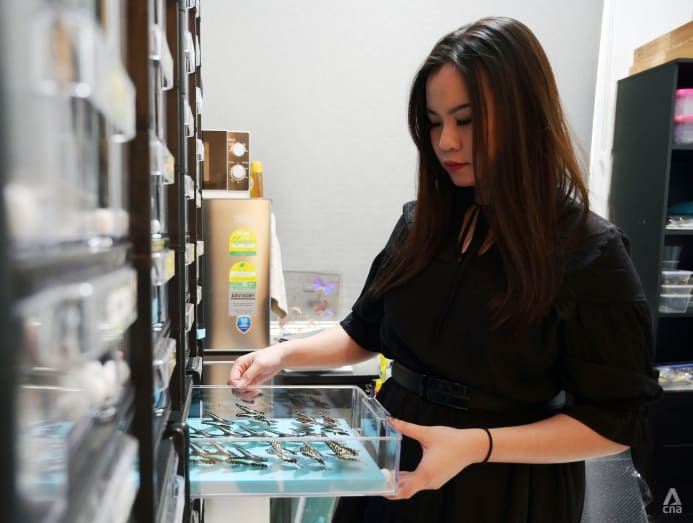
Besides existence her office, workstation and a space to brandish her piece of work, Black Crow Taxidermy & Fine art is also a infinite for workshops – and they're usually fully booked.
People from all walks of life attend her workshops, she shared. The youngest participant was a seven-year-old girl who was interested to learn more about butterflies, while the oldest was a 78-yr-old man who was smashing to decorate his house with more preserved birds.
Some even attend her workshops to appraise if they are ready to pursue this line of work or something similar. "One aunty brought her niece to attend my workshop so that she can decide if she really wants to pursue veterinary," Tham recalled, with a laugh.

WHAT DOES Information technology Accept TO Be A TAXIDERMIST?
Understandably, taxidermy is non for anybody.
"Too an instruction in anatomy, you definitely need to have attention to particular, steady hands and a high tolerance for gore to be a taxidermist," Tham explained.
Being meticulous is important as at that place is very niggling room for error, she added. "If you take a little nick on the trunk, you can always stitch it dorsum. Just once you lot mess upward the optics or face, the whole matter is ruined. Y'all also need to be artistic because taxidermy is presenting your work beautifully, you do non want to scare people."
Patience is also an important virtue in taxidermy equally the process might take up to months depending on the size and type of animal and the scale of the project. She went on to explain that it tin can be a waiting game as she ethically sources for animals and waits for them to be donated to her.
"For some commissioned projects, I can only consummate them when I take all the animals. Once I receive the animals, I procedure them and proceed to make the piece."
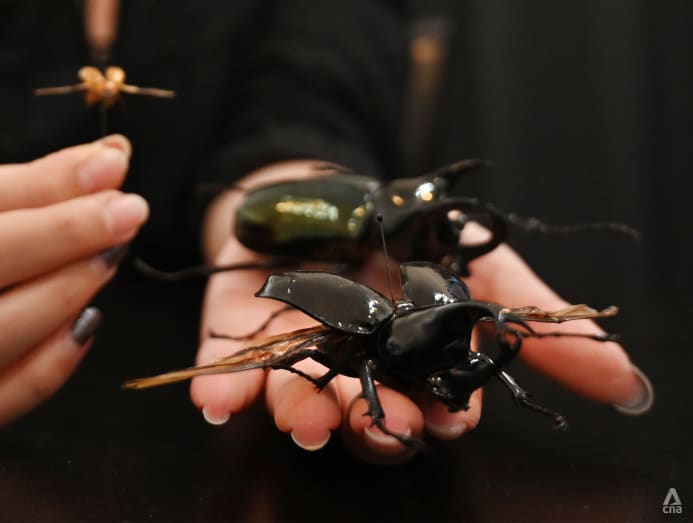
DISPUTING Mutual MISCONCEPTIONS THROUGH TAXIDERMY
While presenting her collection of insects, Tham urged me to touch a horned dung beetle, which was the size of my hand.
"Despite how information technology looks, this beetle is actually harmless. It does not bite humans equally its mouth is so tiny only enough to feed on fruits," she replied, while showing me the beetle's mouth.
Tham went on to explain that many harmless insects have been misjudged because of how they look, and she wishes to deflate this misconception through taxidermy past making beautiful fine art with insects.
Insect issues are far from the worst misconceptions or challenges she's had to deal with equally a taxidermist.
For 1, at that place's the part about how gory and bloody it can get. "At that place will be excessive blood only when you cut wrongly. People commonly think that the deceased animals volition give off a stench. Merely with the right tools and methods, in that location is no smell," said Tham. True plenty, the studio smelled freshly renovated and was actually spotless.
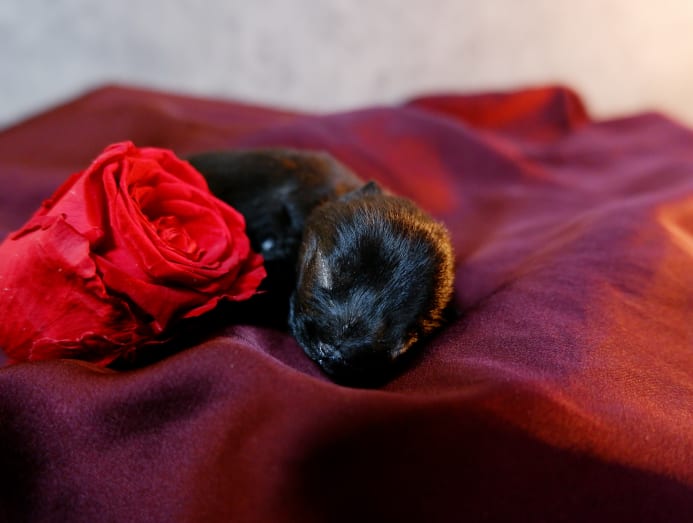
And and so, there'south the stigma regarding the dead – especially in an Asian setting, she shared.
Her rebuttal has always been that what she does is a mixture of art and scientific discipline. "This is the same equally you see in the museum, this is how specimens are preserved to be studied in the future."
Tham added: "I want people to finish connecting taxidermy to decease and ghosts. Instead, I want them to see taxidermy as an fine art of celebrating the lives of the deceased."
In fact, she views all her projects as a celebration of life – her favourite work is that of a 3-day-erstwhile puppy, which, to her symbolises innocence and peace.
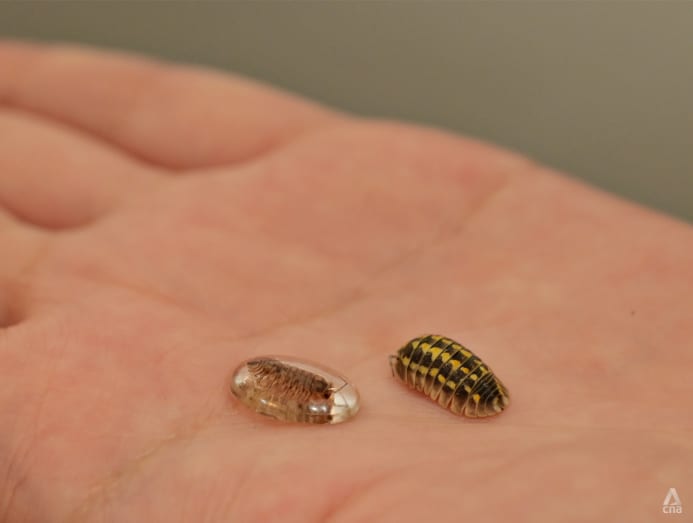
And taxidermy is still teaching Tham new things every day. Recently, she was approached past a group of isopod enthusiasts to perform taxidermy on these types of crustaceans.
It was her offset encounter with the specimen. "I promise to hold more workshops and even work with nature guild groups to connect with the public to teach them more well-nigh wildlife and conservation," she said.
"This jump of faith really did me something practiced because I learn more and besides requite back joy to the public, specially pet owners."
Blackness Crow Taxidermy & Fine art is located at 195 Pearl's Hill Terrace, #01-10, Singapore 168976.

0 Response to "Meet the taxidermist in Singapore who finds beauty and meaning in dead animals"
Post a Comment